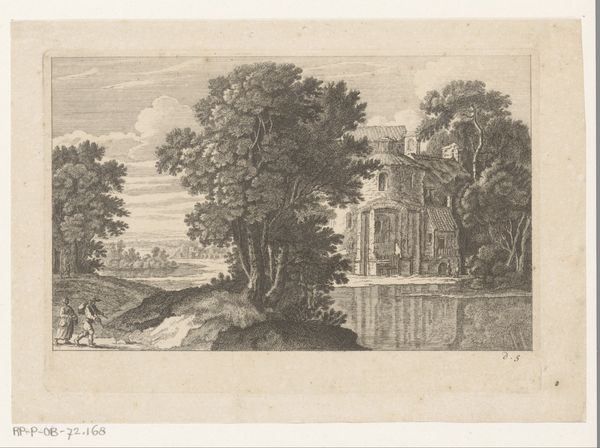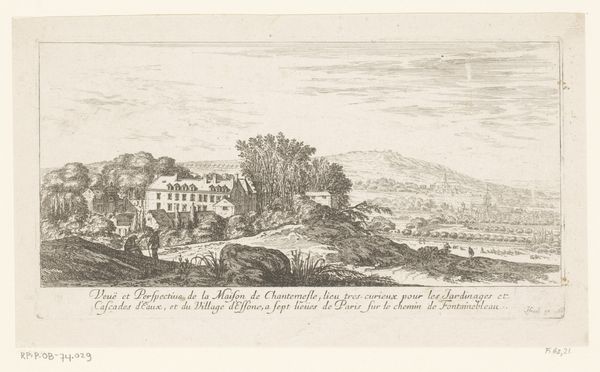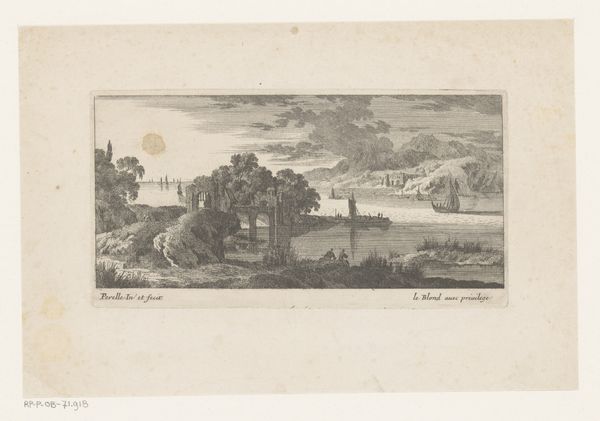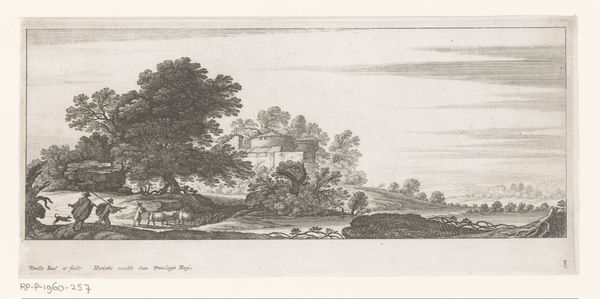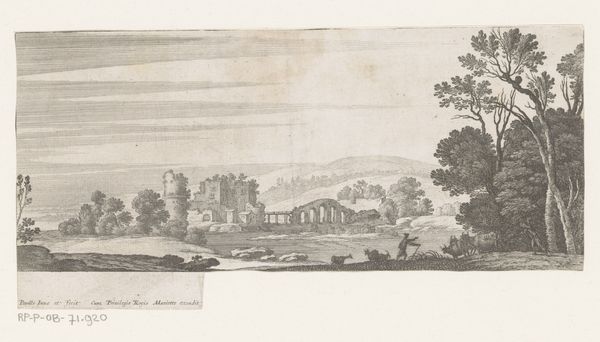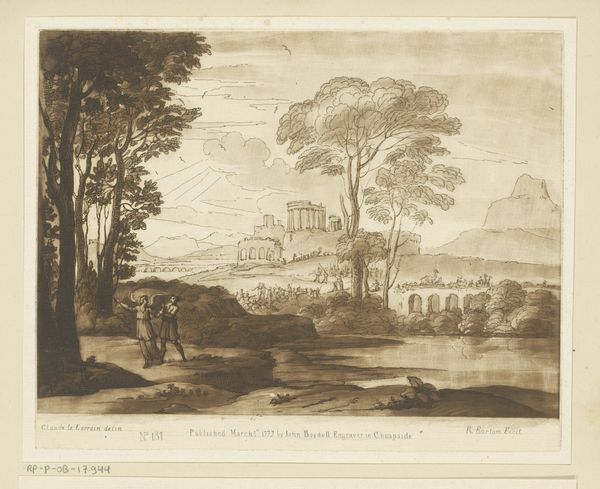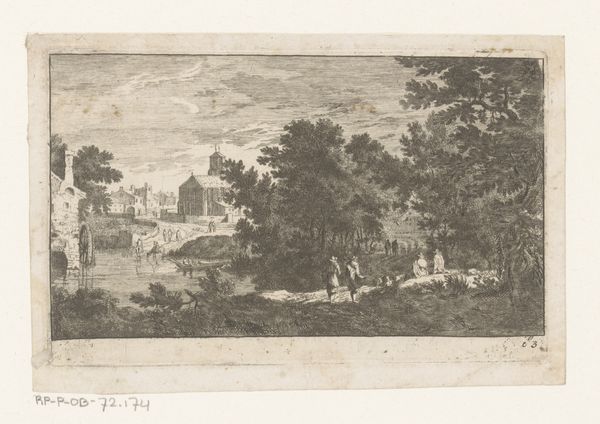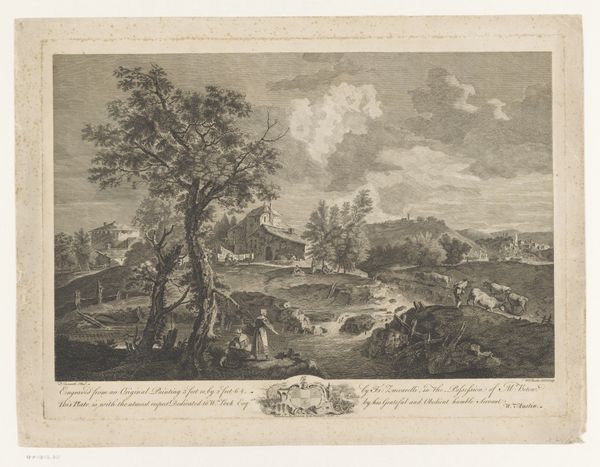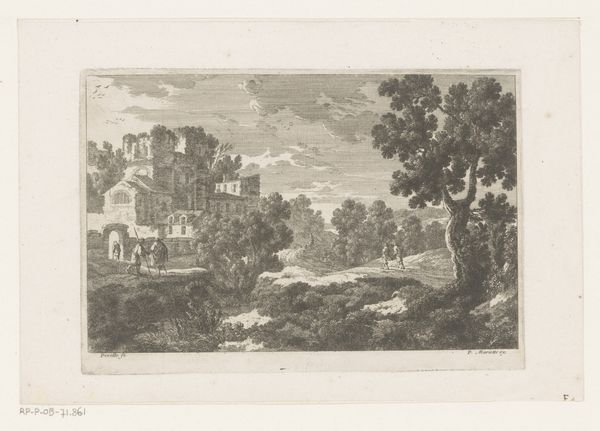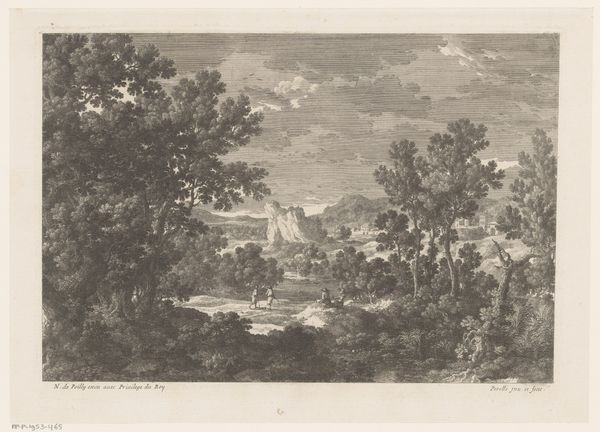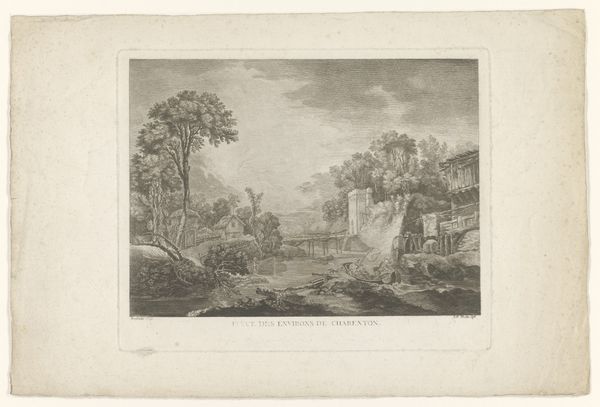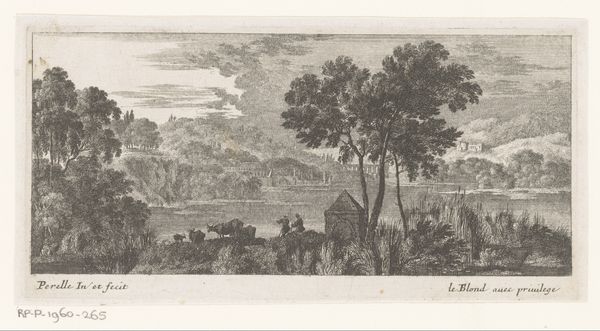
print, engraving
#
baroque
# print
#
landscape
#
engraving
Dimensions: height 133 mm, width 193 mm
Copyright: Rijks Museum: Open Domain
Curator: This is "River Landscape with Monastery Ruins" by Nicolas Perelle, crafted sometime between 1628 and 1679. The Rijksmuseum holds this particular impression of the engraving. What are your immediate thoughts? Editor: Melancholy. The light is almost uniformly gray, contributing to a rather somber mood. There is a subtle decay suggested by the ruins which dominates the whole engraving. Curator: That matches the general theme of ruin present throughout European landscape prints from the period, especially within the Baroque style. This work is created entirely through engraving. Imagine the sheer manual effort—cutting lines into a metal plate! We're talking about skilled labor and access to specialized tools and materials to be able to bring this into existence! Editor: Yes, the decay is compelling from a material point of view but beyond that, these aren't just stones—they signify a lost spiritual power, don’t you think? A visual symbol of faith fading from everyday life as the old monasteries fall. Curator: Potentially, though I think focusing solely on spiritual meaning ignores the print's place in broader economic exchange. Prints like this helped circulate views of the countryside. The art market's development is the central part of any discussion about art made using industrial techniques. Editor: Maybe so. Yet that doesn't negate how people then and now interpret symbols! Ruins throughout art symbolize both the fleeting nature of power, earthly pursuits and human accomplishments, and as a message about the passage of time, from life into death. Curator: Time is an active player here, eroding not only buildings, but established norms around artistic production. Here’s the rising merchant class purchasing art representing ruined religious places… Editor: Yes, but what does it communicate about that societal change through symbolism and emotional expression? Doesn't it speak of a transition that can evoke both melancholy and a sense of possibility? Curator: Maybe. However, to me, the engraving highlights how artists utilized labor and skill to produce multiple identical images intended for a burgeoning consumer base. A view intended to satisfy the masses! Editor: Well, considering its emotional depth as expressed through enduring symbols, and the material skills required in production, Perelle’s print succeeds both as material artefact and vehicle of cultural meaning. Curator: I suppose it leaves one contemplating not only the landscapes we consume, but the landscapes that make the creation of art possible.
Comments
No comments
Be the first to comment and join the conversation on the ultimate creative platform.
